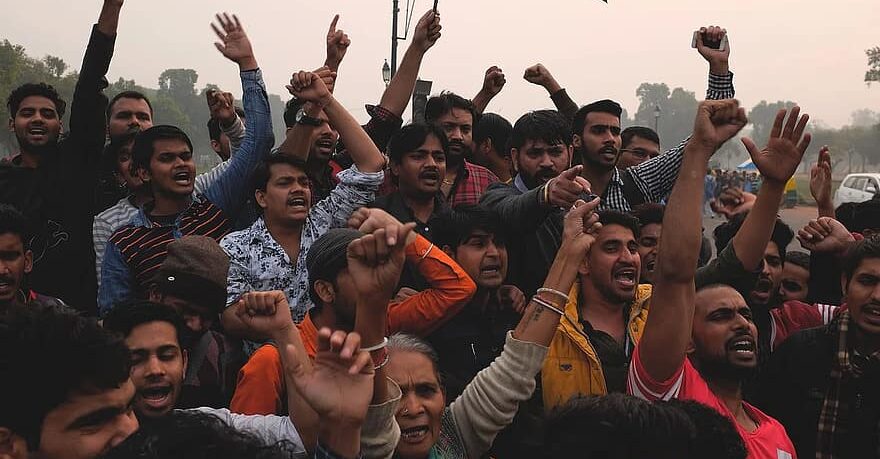

India entered lockdown with 500 total coronavirus cases, and emerged with over 8,000 new cases daily. The decision to end the lockdown and embark on an experiment in “herd immunity” is driven by concern for India’s economy, not for the health of the workers now being crammed into offices and factories, or for those who have lost their jobs with little access to food or benefits.
In June, unemployment stood at 25%, with the Central Trade Union Federations (CTUs) estimating that 240 million have lost their jobs since the start of lockdown. Government initiatives to provide food and benefits have failed to reach those in need, and trade unions warned of malnutrition-related deaths and the threat of suicide among desperate, jobless workers.
The re-opening of the economy provided little relief to India’s working class. Prime Minister Modi has used the pandemic to press ahead with long-planned economic reforms. His government slashed employment rights, cut social spending and announced plans to increase the working day from 8 to 12 hours. Wide-reaching privatisations have been announced, including of the railways, coal, and Air India.
A meeting of the CTUs noted “[with] the opening up of some industrial units, all workers are not being taken back, only a small percentage is finding their place back in jobs and that also on reduced wages and refusal to pay lockdown period salary.”
Social care workers held a three-day strike on 7-9 August over a lack of PPE and unpaid wages. On 9 August, there was a national day of anti-government action across the trade union movement. This was the third national protest in three months and was accompanied by an increasing number of local strikes and protests. Trade union actions have been met with police repression.
The struggle in India over the reopening and restructuring of the economy is a result of the global economic crisis. India is dominated foreign powers, and in order for the ruling class to compete, they are offering up public services for privatisation and their working class as cheap, unregulated labour.
The impact of the pandemic and recession are being disproportionately felt by India’s internal migrants, and workers from the lower castes. For the increasingly dictatorial Modi government to be defeated, the workers’ movement must include the whole working class, including these elements.
The escalating social unrest and industrial action should go beyond days of action, building towards a general strike, involving mass demonstrations and occupations of enterprises, factories and land. Workers must demand work or a living wage, the reversal of privatisations, reinstatement of labour laws, and nationalisation of businesses that threaten closures or job and wage cuts, under workers’ control.